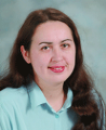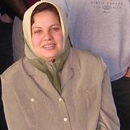Day 1 :
Keynote Forum
Roza Nurieva
MD Anderson Cancer Center, TX, USA
Keynote: Absence of Grail promotes CD8+ T cell anti-tumor activity
Time : 09:30-10:00

Biography:
Dr. Roza Nurieva received her Ph.D. in 2000 from the Gabrichevsky Research Institute of Epidemiology and Microbiology, Moscow, Russia. Her postdoctoral fellowship, which was supported by the Arthritis Foundation, was with Dr. Chen Dong at the University of Washington, Seattle, USA, focusing on understanding the role of costimulatory molecules in regulating T helper cell activation, differentiation, and function. She is currently an Assistant Professor in the Immunology Departments at MD Anderson Cancer Center. Dr. Nurieva’s main research goal is to understand the molecular basis of T cell mediated immune responses with focus on the regulation of cytokine expression and how abnormal immune regulation leads to autoimmunity, inflammation and cancer.
Abstract:
T cell tolerance is a major obstacle to successful cancer immunotherapy; thus, it is of high priority to develop strategies to break immune tolerance. Here we report that expression of the E3 ubiquitin ligase Grail is significantly upregulated in CD8+ T cells infiltrated into transplanted lymphoma tumors and Grail-deficiency confers long-term tumor control. Importantly, therapeutic transfer of Grail-deficient CD8+ T cells was sufficient to repress established tumors. Mechanistically, loss of Grail enhanced anti-tumor reactivity and functionality of CD8+ T cells. In addition, Grail deficient CD8+ T cells exhibited increased IL-21R expression and hyper-responsiveness to IL-21 signaling as Grail promotes IL-21R ubiquitination and degradation. Moreover, CD8+ T cells isolated from lymphoma patients expressed high levels of Grail and lower levels of IL-21R compared with normal donors. Altogether, our data demonstrates that Grail is a crucial factor controlling CD8+ T cell function and is a potential target to improve CTL activity.
Keynote Forum
Jennifer Wu
Medical University of South Carolina, USA
Keynote: Novel antibody for cancer immunotherapy: beyond and synergistic with immune checkpoint blockade therapy
Time : 10:00-10:30

Biography:
Jennifer Wu has received her PhD from the University of British Columbia and Post doctorate training at the Fred Hutchinson Cancer Research Center. She has joined the Faculty of Medicine at the University of Washington and tenured as an Associate Professor. In 2011, she has accepted the faculty appointment at the Medical University of South Carolina and became a Member of Hollings Cancer Center Cancer Immunology Program. Her research focuses on understanding how cancer cells disable the immune system with the ultimate goal to develop effective immunotherapy of cancer. Her work was the first to shown that tumors shed NKG2D ligand sMIC to perturb the maintenance of tumor-killing NK cells and to facilitate tumor metastasis. Her research team is the first to demonstrate that antibody targeting sMIC refuels and revamps endogenous innate and adoptive anti-tumor responses. Her findings were extensively published in Nature, Journal of Clinical investigations, Clinical Cancer Research, Oncoimmunology. She has served as the elected Committee Chair of Cancer in the Federation of Clinical Immunology Society and Editorial Board of many cancer immunology related Journals.
Abstract:
During tumorigenesis, human cells were induced to express a family of MHC I-chain related molecules A and B (MICA and MICB, generally termed MIC) on the surface which serve as the ligands for the activating immune receptor NKG2D expressed by all human NK, CD8 T, NKT, and subsets of gd T cells. Theoretically, engagement of NKG2D by tumor cell surface MIC deemed to signal and provoke the immune system to eliminate transformed cells. Clinically, almost all advanced tumors in cancer patients produce soluble MIC through proteolytic shedding mediated by metalloproteases, or by release in exosomes derived from the cell membrane. Tumor-derived sMIC is known to be highly immune suppressive and profoundly insults the immune system by downregulating receptor NKG2D expression on effector NK and T cells, driving the expansion of tumor-favoring myeloid suppression cells, skewing macrophages into alternatively activated phenotypes, and perturbing NK cell peripheral maintenance. High levels of serum sMIC significantly correlate with advanced diseases of many types of cancer. These observations clearly endorse sMIC to be a cancer immune therapeutic target. However, due to mice lack homologues to human MIC, this concept was not proven until our recent studies. Using a “humanized” MIC-transgenic spontaneous mouse model which recapitulates the NKG2D-mediated onco-immune dynamics of human cancer patients, we show that neutralizing circulating sMIC with a first-in-field monoclonal antibody B10G5 alleviates the immune suppressive effect of sMIC and revamps endogenous anti-tumor immune responses. Therapy with B10G5 results in effective debulking of primary tumor and elimination of metastasis, with no observed toxicity. Furthermore, we show that clearing sMIC with B10G5 also enhanced the efficacy of other cancer immunotherapeutic modalities, such as immune checkpoint blockade or adoptive cell-based therapy pre-clinically. Our study has launched a new avenue of cancer immunotherapy which can be readily translated into clinical trials.
Keynote Forum
Gopal Krishnan
Global Product Manager- Bioassays, Promega Corporation. USA
Keynote: Quantitative and Reproducible Cell-Based Bioassays to Advance Immunotherapy Programs
Time : 10:50-11:20

Biography:
Gopal B Krishnan completed his PhD from the National Institute of Immunology, New Delhi and has worked on Early Embryonic Development and Role of Bone Morphogenetic Proteins in his Post-doctoral Fellowship at the University of Wisconsin, Madison. Before joining Promega Corp, he worked as the Team Lead for Development of DNA and siRNA transfection reagents at Mirus Bio. Currently, he is a Global Product Manager of genomics products at Promega Corp., Madison, WI. He has published over thirty peer reviewed articles, chapters and abstracts. In addition he has successfully launched fi ve new life science research products.
Abstract:
Chemotherapy and radiation therapy of cancer cells are associated with several side effects since a large population of rapidly dividing healthy cells also get destroyed. Such treatments reduce the patient’s quality of life. Therefore development of therapeutic antibodies against immune checkpoints for the treatment of cancers is gaining momentum and has already shown promising results in clinical trials. However, the functional screening and development of antibody drug candidates often relies on the use of human primary immune cells that are technically challenging to implement and highly variable. Primary peripheral blood mononuclear cells (PBMCs) are routinely used in traditional bioassays to measure potency, stability of antibody drugs. We have developed mechanism of action-based potency reporter bioassays using engineered cell lines that offer numerous advantages including optimized and rapid workflow, data reproducibility and robustness. For these reasons, and because they are easy to implement and transfer between global sites, reporter-based bioassays are now widely adopted in controlled drug development environments.
The presentation will discuss the development of reporter based Fc bioassays and immune checkpoint reporter assays for immune checkpoint receptors utilizing engineered cell lines to serve as the effectors cells and artificial antigen presenting cells. Promega bioassays are pre-qualified to assess repeatability, intermediate precision, specificity and linearity. These bioassays are principally developed to measure the function of ADCC and ADCP mediating antibodies and immune checkpoint blocking antibodies.
- Special Session
Location: Chicago, USA
Session Introduction
William Jia
University of British Columbia, ViroGin Biotech Ltd, Canada
Title: A novel oncolytic HSV-1 vector for cancer immunotherapy
Time : 11:20-12:20

Biography:
William Jia has completed his PhD in 1991 at University of British Columbia (UBC) in Molecular Neurosciences. He has been an Associate Professor since 1999 at UBC and an Associate Scientist of BC Cancer Research Centre. He has been a Conjunct Professor of Fudan University, Shanghai Institute of Pharmaceutical Industry and the VP (research) for Shanghai Innovative Research Centre of Traditional Chinese Medicine (SIRC-TCM). He was the first in Canada and the first few scientists in the world using human Herpes simplex virus to treat cancer, which pioneered the field of oncolytic virotherapy for cancer treatment. He has developed one gene therapy drug for malignant gliomas has completed a phase I clinical trial in China. His most recent contribution is to raise the concept of transcription and translation dual regulated (TTDR) oncolytic viruses for cancer treatment. In the past years, he has received many awards and research funds. Since 1997, he has been a Scholar of Canadian Institute of Health Research. He has also received Petro Canada Young Inventors Award in 2007.
Abstract:
Oncolytic virotherapy has attracted increasing attention as one modality of cancer immunotherapy, especially after FDA approval of T-VEC, the first oncolytic virus (OV) drug in North America. It is now widely accepted that OV induced tumor regression is multi-mechanistic and host immune reaction plays a pivotal role. In the present study, we reported a novel oncolytic HSV-1 virus VG161 that carries three immune stimulating factors: IL12, IL15 with its receptor alpha unit and a PDL-1 blocking peptide. We have shown that this virus expresses the three major factors in infected cancer cells and shown enhanced immune cell cytotoxicity in vitro when co-cultured with PBMC. We also showed that VG161 caused stable and complete tumor regression in both syngeneic mouse tumor and human tumor in nude mouse models. The same tumor failed to grow in previously treated animals. Transcriptional profiling of the tumors treated with VG161 demonstrated a dramatically changed immune microenvironment in the tumor compared to infection with a similar virus VG160 that does not carry the anti-tumor immune stimulating factors. The above results suggest that co-expressing multiple factors by an OV can have enhanced and durable anti-tumor efficacy.
- Immunotherapy - Tumors Cancer Immunology & Immunotherapy Cancer Research Tumor Immunotherapy Research Tumor Markers and Drug Targetting
Location: Chicago, USA
Session Introduction
Manal Mohamed Saber
Minia University, Egypt
Title: Diagnostic and prognostic markers in Non-Hodgkin 's Lymphoma
Time : 14:20-14:45

Biography:
Dr Manal Mohamed Saber, has earned her PhD from Nottingham, UK. she is focusing on cancer studies, EMAP II, immune suppression, molecular, cellular and laboratory techniques at a high level. She received excellent training in molecular and cellular techniques at the highest international level and has previously worked with cancer and immunology studies. Her dedication to cure cancer got her involved in cancer studies
Abstract:
Objectives:
Establishing diagnostic and prognostic factors are very important in the management of Non-Hodgkin Lymphoma (NHL). Our aim was to evaluate the clinical significance of serum cytokines and immunological markers, in NHL patients for assessing treatment response and prognosis of patients.
Methods: Serum EMAP-II, IL-19, IL-10, IL-24, TGF-β, CD3, CD5, CD10, CD19, CD20, CD22, CD23, CD68, CD79a, CD99, LCA, bcl-2, bcl-6 and anticardiolipin (aCA) IgM, aCA IgG, antinulclear antibodies (ANA) levels were measured in the serum of 64 NHL patients before and after treatment with CHOP-based chemotherapy by enzyme-linked immunosorbent assay. Correlations of marker levels to the laboratory, and clinicopathological markers were performed.
Results: Serum levels of EMAP-II, IL-10, CD3, CD5, CD10, CD19, CD20, CD99 and aCA IgG were higher before therapy and decreased significantly thereafter (P<0.001). Serum CD68, CD79a and bcl-6 did not change after therapy. Significantly higher levels of IL-19, IL-24, bcl-2, CD22, CD23, LCA, TGF- β, ANA, and aCA IgM were demonstrated in patients with relapse (P<0.001). Significant associations were found between serum markers, clinicopathological and laboratory findings.
Conclusion: Cytokines and immunological markers can serve as useful diagnostic markers in NHL patients. They assessed response to therapy. Serum IL-19, IL-24, bcl-2, CD22, CD23, LCA, TGF- β, ANA, and aCA IgM proved to be the most sensitive predictor of advanced disease and poor prognosis
Sung Hwan Lee
Yonsei University College of Medicine, Seoul, Korea
Title: Oncologic impact of postoperative delta-neutrophil index in pancreatic cancer
Time : 14:45-15:10

Biography:
Sung Hwan Lee is currently an Clinical & Research Fellow in the Department of Surgery at Yonsei University College of Medicine, Republic of Korea. His Academic Interests are Hepatobiliary and pancreatic surgery / Surgical oncology for pancreatic cancer / Molecular Imaging by two-photon microscopyPancreatic cancer microenvironment / Cancer metabolism
Abstract:
Background: Major cancer surgery can cause surgical stress and disturbs the immune system. The oncologic impact of perioperative immune disturbance is not yet known.
Methods: From December 2009 to December 2013, totally 154 patients who underwent pancreatic resection for pancreatic ductal adenocarcinoma were enrolled into this study. Perioperative leukocyte and lymphocyte counts assessed by an automated blood cell analyzer were obtained from institutional database. Clinicopathologic factors and survival data were identified from medical record.
Results: Immature granulocytes counted by delta neutrophil index (DNI) were significantly correlated with oncologic outcomes after curative resection of pancreatic ductal adenocarcinoma. The highest value, elevation period, and bimodality of DNI value were statistically significant predictive factors for cancer recurrence after pancreatic resection.
Conclusions: Postoperative DNI predicts the tumor recurrence after resection of pancreatic cancer. Well-designed clinical and translational researches for perioperative immune disturbance are mandatory for revealing crucial concepts for tumor immunology in veiled therapeutic viewpoint.
Qiaofei Liu
Peking Union Medical College & Chinese Academy of Medical Science, Beijing, China
Title: The tumor microenvironment is correlated with clinicopathological traits and indicates the adjuvant chemotherapeutic efficacy of gemcitabine in pancreatic cancer after curative Whipple procedure
Time : 15:10-15:35

Biography:
Dr. Liu is an attending surgeon of general surgery of Peking Union Medical College Hospital which successively ranks NO.1 during the last 7 years in China. He have been focusing on the integrated treatment of pancreatic cancer after curative resection, especially new treatment based on the tumor microenvironment, for more than 10 years. He has got three national grants to support his research and also got his papers published on prestigious academic journals, including cancer research, international journal of cancer, journal of immunology and cancer immunology immunotherapy, et al.
Abstract:
Pancreatic cancer is a devastating malignance with extremely complicated tumor microenvironment. Adjuvant gemcitabine treatment is the golden standard regimen for pancreatic cancer after curative resection, however its 5-year overall survival is only 20% for this kind of patients. The correlations between tumor microenvironment and the efficacy of gemcitabine has been seldom reported. By using tumor tissue microarray technology, we analyzed the landscape of the tumor microenvironment of 95 cases of pancreatic cancer patients who underwent pancreaticoduodenectomy (Whipple procedure) and adjuvant gemcitabine treatment. The different components in the microenvironment, including the immune cell populations(Pan-inflammatory cells, B cells, Th cell , CTL, Treg, DC, NK, macrophages and granulocyte),Th1 related cytokines(IL-6, IFN-γ, TNF-α,) ,Th2 related cytokines(IL-10, TGF-β, IL-4,IL-17), M-CSF, MG-CSF, microvascular density(MVD) and micro lymphatic vessel density(MLVD), pancreatic cancer stem cells and the immune checkpoints(PD-L1 and CTLA-4) were immunohistologically stained. The correlations between the different patterns of tumor microenvironment and the efficacy of gemcitabine and the clinicopathological traits were analyzed. The results indicated that the tumor microenvironment was significantly correlated with the clinicopathological characteristics and the efficacy of gemcitabine. The tumor microenvironment could be a practical indicator for personal and percisional adjuvant gemcitabine chemotherapy in pancreatic cancer patients after curative resection.
Guohui Qin
Biotherapy Center, the First Affiliated Hospital of Zhengzhou University, Zhengzhou, China.
Title: Comparative analysis of immune molecules in esophageal squamous cell carcinoma and adenocarcinoma
Time : 16:20-16:45

Biography:
As a PhD candidate, Ms Guohui Qin is majoring in tumor immunology, specially in tumor microenvironment. She has been studying on the role of immunosuppressive cells as myeloid-derived suppressive cells (MDSCs) and tumor initiating cells in the regulation of the proliferation and function of effective T cells in tumor microenvironment. And she has been committed to improve the efficiency of immunotherapy by blocking immunosuppressive factors. Moreover, her reports about “Blocking MDSCs accumulation in tumor site improves clinical prognosis” has been employed in Cold Spring Harbor Asia Conferences.
Abstract:
Backgrounds: Esophageal cancer has become the sixth common reason of cancer death and causes approximately 400,000 deaths worldwide annually. Esophageal cancer can be divided into esophageal squamous cell carcinoma (ESCC) and esophageal adenocarcinoma (EA) according to the histopathology. ESCC mainly distributes in Asia, correlated with smoking and drinking, while the incidence of EA which is related to gastric reflux, Barrett’s esophagus and obesity increased year by year in Western countries. Previous studies have demonstrated TP53 with a high mutation rate in both pathologies, whereas TP63/SOX2, which is associated with cell differentiation, has a high mutation rate in ESCC. However, there are few studies on the expression patterns of tumor-associated immune molecules in esophageal carcinoma. Here, we investigated the correlation between different molecules and the prognosis of different pathological esophageal cancer with the analysis of ESCC, EA and normal tissue from TCGA database. Materials and Methods: In this study, 94 different ESCC and 89 cases of EA were screened for the differentially expressed genes in tumor tissues. We investigate the distribution of increased genes in KEGG pathways. With Venn diagram Analysis we clarify the similarities and differences of gene distribution in the development of ESCC and EA. And the correlation between the screened genes and their prognosis significance was analyzed with Kaplan-Meier methods. Findings: Compared with normal tissues, the expression of 3109 genes in ESCC was increased, while 2571 genes elevated in EA. In further enrichment analysis of the elevated genes, we found that the cytokine-cytokine receptor interaction pathway may play a crucial role in the tumorigenesis and development of esophageal cancer. The Venn diagram Analysis showed that 57 genes were identical in ESCC and EA, but 18 genes were found specially increased in ESCC and other 37 related genes were only significantly elevated in EA. With survival analysis, we got that TNFRSF10B was positively and CXCL14 was negatively correlated with ESCC prognosis. And CXCL8 and IL17RB in EA were negatively correlated with survival. Our further experiments will analyze the role of TNFRSF10B, CXCL14, CXCL8 and IL17RB in ESCC and EA respectively.
Conclusion: Different molecular mechanisms play significant role in occurrence and development in ESCC and EA, which determines the different prognosis and target treatment in esophageal carcinoma.
Leiming Xia
University of Michigan Comprehensive Cancer Center, USA
Title: Phase I clinical trials for the PD-1/MUC1 CAR-pNK92 immunotherapy
Time : 15:55-16:20
Biography:
Leiming Xia is an professor in University of Michigan Comprehensive Cancer Center, USA. he has published many artciles in reputed journals.
Abstract:
Mucin1 (MUC1), as an oncogene, overexpressed in many human carcinomas and plays a key role in the progression and tumorigenesis. MUC1 specific chimeric antigen receptors (CARs) modified T/NK cells has been shown to be an effective approach for inducing MUC1+ tumor cells death. However, treatment failure with CAR-T/NK therapy was usually caused by the high expression of negative immune-regulatory molecules in tumor microenvironment. PD-L1 has been identified as negative checkpoint molecules that promote immune evasion of tumor cells. The interaction of PD-1 and PD-L1 inhibits the function of tumor-infiltrating lymphocytes or infused T/NK cells while activating the negative immune-regulatory cells in tumor microenvironment. To conquer these barriers and transform the PD-1/PDL-1 suppression effect into a positive regulation, we engineered clinically applicable NK-92 cells by lentiviral gene transfer to express two kinds of chimeric antigen receptors (CARs) comprising an anti-MUC1 or anti-PDL1 scFv antibody fusion protein with CD28-CD137 as a signaling moiety and truncated PD1 peptide. Anti-MUC1-CAR expression by gene-modified NK92 cells speciï¬cally and efï¬ciently lysed MUC1 positive tumor cells in vitro and in vivo. In this study, 10 patients with different kinds of tumor (lung cancer, pancreatic cancer, colon cancer and ovarian cancer) were enrolled with PDL-1 and MUC-1 positive through pathological examination, then CAR-NK cells were infused several times into the patients (1×109 cells total). Of 10 patients, 2 patients were withdrawn, 7 patients (70%) showed stable disease and 1 patient (10%) showed progressive disease. We also monitored the cytokines level and hematological changes to evaluate the safety. Most patients didn`t shown cytokine storm or bone marrow suppression obviously. From these patients we found that CAR-NK therapy has a broad prospect of application as a novel immunotherapy related to its certain clinical effects, mild side effects and easy preparing. CAR-NK would play more obviously anti-tumor efficacy through Bi-target treatment.
Qiao Li
University of Michigan Comprehensive Cancer Center, USA
Title: Adoptively transferred B cells directly kill tumor cells via the CXCR4/CXCL12 and perforin pathways
Time : 16:20-16:45

Biography:
Dr. Li is a member of the Tumor Immunology Program of the Comprehensive Cancer Center at the University of Michigan. His research to develop innovative cancer treatment approaches through adoptive immunotherapy is clinically relevant. Particularly, his recent studies focus on B cells and cancer stem cells (CSCs) represent two new directions in cancer immunotherapy. He and his team have published a series of papers for B cells as effector cells recently. These papers respectively provided direct experimental evidence for the involvement of antibody and B cells in antitumor reactivity, demonstrating for the first time that use of in vivo sensitized and in vitro activated B cells alone could mediate tumor regression in cancer adoptive immunotherapy, and observed that effector B cells could kill target tumor cells directly in the absence of complement and other effector cells
Abstract:
Over the years, the role of B cells in the host immune response to malignancy has been overshadowed by our focus on T cells. The role played by B cells in cancer immunology is complex and controversial. The observation made by our lab that activated B cells alone can mediate tumor regression in the adoptive immunotherapy of solid tumors is innovative. One novel mechanism by which activated B cells mediate tumor regression is via direct tumor cell cytotoxicity in the absence of antibodies. We reported that antitumor B cells directly kill tumor cells via the Fas/FasL pathway and are regulated by IL-10. In this study, we defined additional mechanisms involved in B cell antitumor immunity. Administration of IL-2 significantly augmented the therapeutic efficacy of adoptively transferred tumor-draining lymph node (TDLN) B cells which express IL-2R. Furthermore, we detected CXCR4 expression on 4T1 TDLN B cells, and 4T1 tumor cells produced its ligand CXCL12. Transwell experiments demonstrated the chemotraction of CXCR4-expressing 4T1 TDLN B cells towards CXCL12-producing 4T1 cells. Blockade of CXCR4 using a CXCR4-specific inhibitor, AMD3100, significantly reduced the killing of 4T1 tumor cells by 4T1 TDLN B cells. Blockade of FasL and CXCR4 concurrently inhibited B cell-mediated direct killing of tumor cells in an additive manner, indicating that both Fas/FasL and CXCL12/CXCR4 pathways are involved in the direct killing of 4T1 cells by 4T1 TDLN B cells. TDLN B cells produced perforin. Additional experiments showed that effector B cells could directly kill tumor cells via the Fas/FasL and CXCR4/CXCL12 pathways as well as perforin. These findings underscore the diversity of function by which B cells can play an important role in the host immune response to tumor, and clearly indicated that transferred effector B cells can act independently of T cells in causing tumor destruction in adoptive immunotherapy
